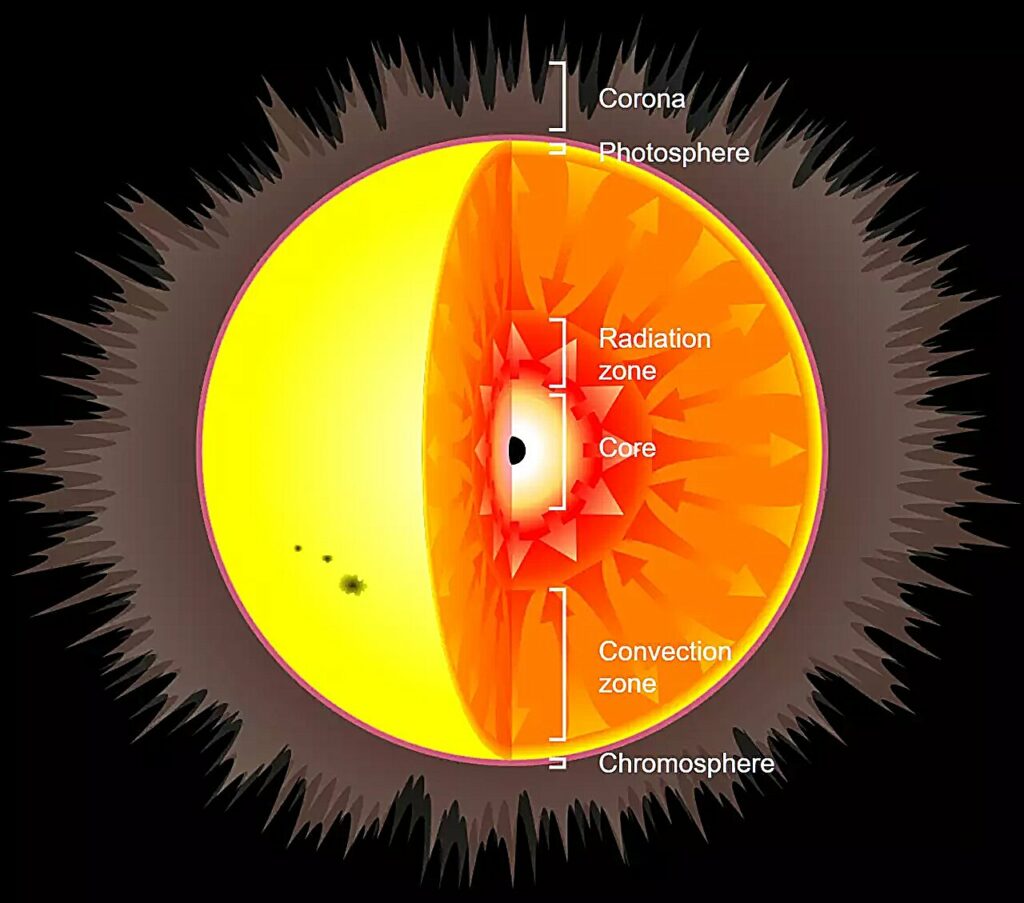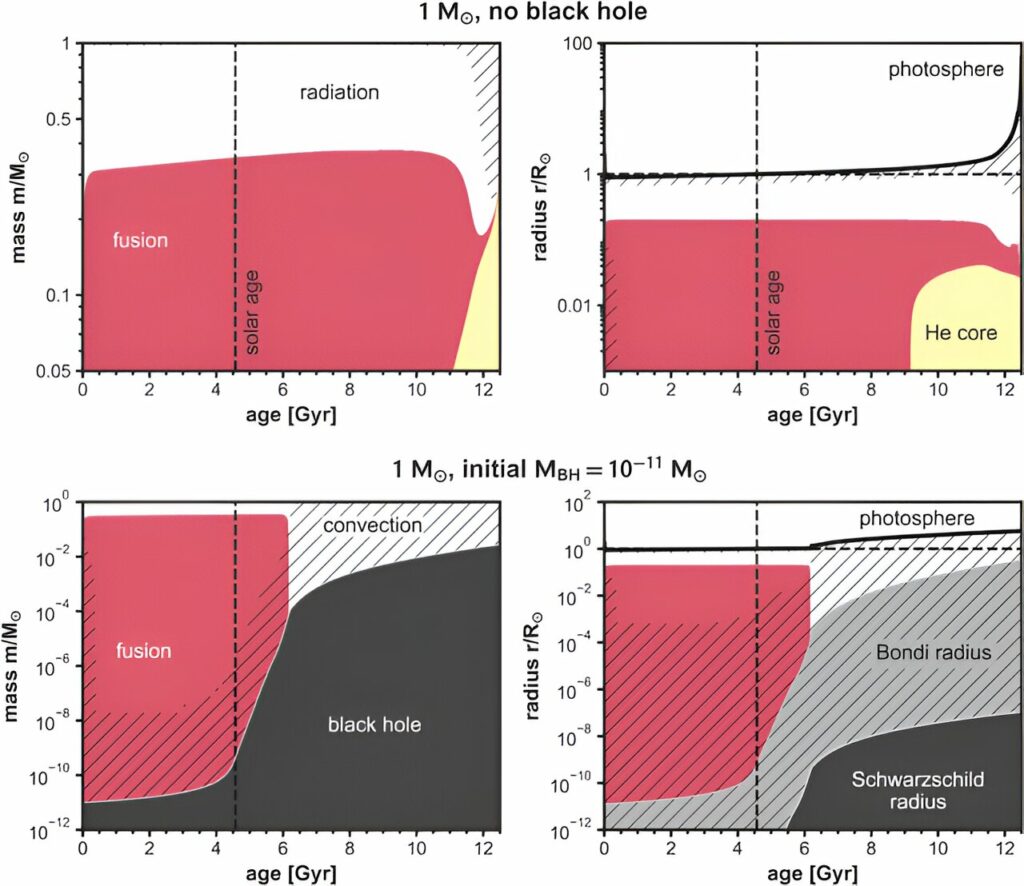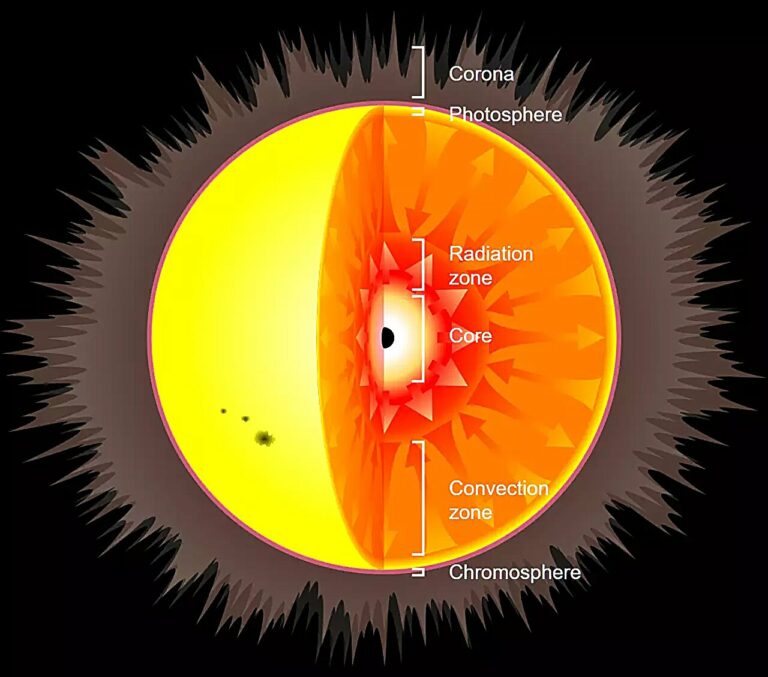What occurs when a black hole is introduced into the sun?
In a theoretical situation, newly forming stars might capture small, primordial black holes. Led by researchers at the Max Planck Institute for Astrophysics, an international team has simulated the evolution of these “Hawking stars” and discovered unexpectedly prolonged lifetimes, resembling conventional stars in various aspects.
This study is detailed in The Astrophysical Journal. The identification of such stars through asteroseismology could offer a means to investigate the presence of primordial black holes and assess their potential as constituents of dark matter.

Engaging in a scientific exercise, let’s consider a scenario: If we hypothesize the creation of a significant number of minuscule black holes just after the Big Bang, known as primordial black holes, some of them might become ensnared during the formation of emerging stars. How might this influence the star throughout its lifespan?
Selma de Mink, the director of the stellar department at the Max Planck Institute for Astrophysics (MPA), notes, “Scientists sometimes pose unconventional queries to gain deeper insights. We remain uncertain about the existence of such primordial black holes, yet conducting an intriguing thought experiment is within our purview.” Primordial black holes, spanning a broad mass spectrum from sizes akin to asteroids to thousands of solar masses, could potentially serve as a significant element of dark matter and act as the precursors to the supermassive black holes found at the cores of contemporary galaxies.
There exists a minute probability that a nascent star might capture a black hole with a mass comparable to that of an asteroid or a small moon, subsequently occupying the star’s center. Such a celestial entity is termed a “Hawking star,” named in homage to Stephen Hawking, who initially proposed this concept in a paper during the 1970

The growth of the black hole situated at the core of a Hawking star unfolds gradually, impeded by the outflowing luminosity hindering the infall of gas that would otherwise nourish the black hole. A team of international scientists has undertaken the modeling of such a star, considering various initial masses for the black hole and employing different accretion models for the stellar center.
Their remarkable finding reveals that when the black hole mass is small, the star closely resembles a conventional star. Earl Patrick Bellinger, MPA Postdoc and now Assistant Professor at Yale University, who spearheaded the study, notes, “Stars hosting a black hole at their core can endure surprisingly long. Our sun could potentially harbor a black hole as massive as the planet Mercury at its center without detection.” The primary distinction between a Hawking star and a standard star lies near the core, where accretion onto the black hole induces convective changes.
This alteration, however, does not affect the surface properties of the star and eludes current detection capabilities. Nevertheless, the relatively recent field of asteroseismology, leveraging acoustic oscillations to explore a star’s interior, could offer a means of detection. In the later stages of evolution, particularly in the red giant phase, the presence of the black hole might yield distinctive signatures. Upcoming projects like PLATO hold the potential to unearth such objects. Nevertheless, further simulations are imperative to elucidate the consequences of introducing a black hole into stars of varying masses and metallicities. If primordial black holes indeed emerged shortly after the Big Bang, the search for Hawking stars presents a potential avenue to discover them. “
While the sun serves as an illustrative example, there are compelling reasons to believe that Hawking stars could be prevalent in globular clusters and ultra-faint dwarf galaxies,” emphasizes Professor Matt Caplan at Illinois State University, a co-author of the study. “This implies that Hawking stars could serve as a tool to scrutinize both the existence of primordial black holes and their potential role as dark matter.”
This article is republished from PhysORG under a Creative Commons license. Read the original article.
Do not forget to share your opinion with us to provide you with the best posts !




0 Comments